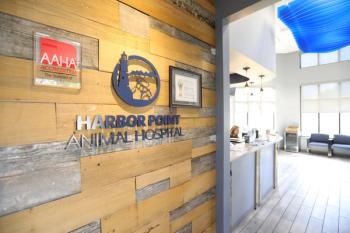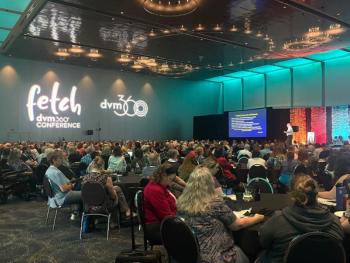
Three wishes for AVMA
Schaumburg, Ill. - He loves every minute of his job, but Dr. Bruce Little's morning starts at an early 4:30 a.m., jotting down notes on ideas for the nation's largest veterinary membership organization. By 8 a.m., the executive vice president arrives at office headquarters and spends his first hour trying to decipher what those notes say.
SCHAUMBURG, ILL. — He loves every minute of his job, but Dr. Bruce Little's morning starts at an early 4:30 a.m., jotting down notes on ideas for the nation's largest veterinary membership organization. By 8 a.m., the executive vice president arrives at office headquarters and spends his first hour trying to decipher what those notes say.
He appears far from absent-minded, but with 450 e-mails in his inbox, a parade of daily meetings and the public, staff and membership beating on his door, it's a challenge for American Veterinary Medical Association's top executive to get things done. Real work, he says, doesn't begin until after lunch, and the trek home often doesn't follow until seven or eight hours later.
Ask for his average hourly workweek, and Little acts as though he's never tallied up a time sheet. But for the next veterinarian to assume his chair, he's amassed a wealth of advice on challenges and experiences as the association's longest running executive. In an exclusive interview with DVM Newsmagazine, Little sheds light on what its like to sit in the organization's top seat.
One voice
Pondering his December 2007 retirement, he reveals three necessary priorities for the profession and AVMA. For starters, the association's main concern, Little says, should be to stay united.
"This is going to be more important than anything else we do," he predicts. "If we start to splinter off as some other professions have done, we'll lose value. We're highly respected, but there are only 90,000 of us. Our numbers don't even fill a football stadium. We have to stick together. We have to be one veterinary medicine."
For the good of society, globalization in veterinary medicine is imperative, Little adds. "We know that approximately 62 percent of all diseases known to mankind are zoonotic. We don't have any fences anymore. I think the biggest example of that is the potential influenza outbreak. I just came from South Africa, and their biggest concern is that avian influenza will show up in the trafficking of exotic birds. It's no longer OK for us to just take care of our little part of the world."
Little also calls for creating an environment where the nation's brightest students can afford to become involved in veterinary medicine from an economic standpoint. "The economic base has to be such that people can make a living, and the risk of a long and expensive education is rewarded with the ability to enjoy a comfortable life. Treating animals is not all about money, but there has to be enough money to be able to provide the quality of care that the animals deserve and need."
New blood, old ideas
Championing those initiatives will be the job of the next executive vice president, who will be named by a search committee being appointed at presstime. For that veterinarian, Little has a laundry list of advice.
The most important ability of AVMA's future executive vice president is to envision the entire operation, from its $27.5 million annual budget to its 74,000 members.
"The big picture is difficult, especially for veterinarians who like to micromanage," he adds.
At the same time, the executive vice president must be tolerant of different points of view. "You have to sit on the fence and realize everybody deals with people they don't want to take home to Sunday dinner. There have been times when I've had to be quiet on board actions I've opposed and then be an advocate for them. It comes with the position. You have to learn how to do that."
That kind of flexibility must translate to a willingness to change and address challenges, Little adds. "The only person who enjoys change is a wet baby," he says. "We need to go back to a 50/50 gender ratio in this profession, and maybe that means changing our teaching and recruiting models. England has just reported 92-percent of all their veterinarians are female, and they aren't able to make the commitment to work 80 to 90 hours a week to start a practice without compromising their other calling in life. We need to balance this profession. If we don't, I'm convinced that as high as 25 of all veterinary services will be delivered through corporate practices in the not too distant future."
Communication
The biggest cause of divorce is silence, Little says, adding that an AVMA leader must facilitate the exchange of ideas among veterinary medicine's various factions to keep hot-button issues such as welfare from fracturing the association.
Yet technological communication ranks as one of Little's biggest pet peeves. Cell phones and e-mail take away from the ability to reflect and think before reacting, which is a must for anyone assuming the executive vice presidency.
"We don't communicate like we used to," Little says. "I adhere to Andy Rooney when it comes to technology. Years ago, he acknowledged that you can do a lot more on computers than on typewriters. But 90 percent of what we do on them doesn't need to be done in the first place."
— By Jennifer Fiala, Senior Editor
Newsletter
From exam room tips to practice management insights, get trusted veterinary news delivered straight to your inbox—subscribe to dvm360.




